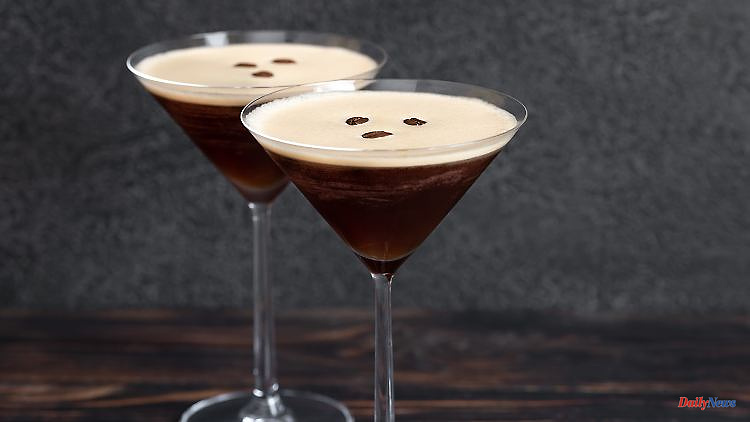With the combined power of caffeine and vodka, the espresso martini helps its connoisseur to fly high. The popular cocktail has been smoldering among us for a long time - a full 40 years - but from a connoisseur's point of view it is making a big comeback during the pandemic. How it came about and why it is so popular.
This cocktail makes you blue and awake at the same time, according to its fans: concentrated coffee meets vodka. It's about espresso martini. Experts include it among the after-dinner drinks, but that doesn't prevent some from taking it as an aperitif. The mixed drink has an eventful 40-year history and the reputation of being the new trend drink - almost as a counter-program in a world full of Aperol Spritz, gin and tonic or hype about tequila and mezcal.
Anyone calling out a trend drink these days will quickly hear that this drink has been popular for a long time. Of course, this is also the case with the espresso martini, which some find "total 2022" or even "total 2018". Well, the "New York Times" wrote in June 2021: "The espresso martini is everywhere (again)." The sweet, strong, satisfying is just zeitgeist: "In its most classic form, the drink consists of freshly brewed espresso, coffee liqueur (like Kahlúa or Mr. Black) and vodka, shaken and served in a chilled martini glass with three roasted coffee beans as a garnish ."
In Germany, the editor-in-chief of the specialist publication "Mixology - Magazin für Barkultur", Nils Wrage, says that the first signs of the renaissance were already evident in the USA at the end of the 2010s, when the espresso martini appeared in several television formats. "We've seen a form of re-popularization of older drinks before, most notably with the Cosmopolitan, which 'Sex And The City' brought to the big stage around 2000."
Terry Cashman, London bartender, describes the origin of the drink in a specialist portal of the spirits group Diageo as follows: "Dick Bradsell invented it in 1983 during his time in the Soho brasserie and originally called it 'Vodka Espresso'. The cocktail legend says that "A young supermodel-to-be came to the bar and asked Dick to make her a cocktail with coffee. He mixed her a drink of vodka, sugar, coffee liqueur and a shot of espresso straight from the coffee maker next to his station."
Bradsell, who died in 2016 at the age of only 56, was a stylistically influential figure in the London bar scene in the 80s and 90s. During his time in the bar "The Pharmacy" the drink was called "Pharmaceutical Stimulant", then again "Vodka Espresso". Drinks take on a life of their own once they become popular, Cashman says. "And the trend in the late '90s to attach a 'martini' to anything served in a martini glass (chocolate, watermelon, apple - the choice is yours) soon led to it entering the public consciousness as an espresso martini received."
Nevertheless, the drink was almost forgotten for years, as "Mixology" boss Wrage says. "According to our observations, the espresso martini experienced its boost during the peak phase of the pandemic and lockdowns, when many people began to mix cocktails at home. This is plausible insofar as it is well suited for at home: many people have an espresso machine, and otherwise you don't need much." The drink is "fancy, but also accessible".
In German-speaking countries too - from Hamburg to Zurich, from Stuttgart to Berlin, from Cologne to Vienna - the bar scene has gratefully embraced the international trend, says Wrage. Espresso Martini is easy to prepare and can even be prepared in larger quantities. It also offers bartenders the opportunity to experiment, for example by changing the underlying spirit. "It can be more fun with rum or tequila because then it offers a more complex aroma."
Espresso Martini fits in well with our times and lifestyle, says Wrage. "Coffee has experienced a new perception as a pleasure product in recent years. In the eyes of many people, this makes it more suitable as an ingredient in a high-quality drink. On the other hand, the drink with its combination of alcohol and caffeine also symbolizes a fusion of intoxication and performance - Pressure that a lot of people feel under these days."












